Art on Screen: 12 Movies about Artists Worth Seeing
Whether troubled or exciting, extraordinary or perfectly average, the lives of artists are an endless source of inspiration for cinematographers.
Edoardo Cesarino 17 February 2025
In 1911 the Italian film theoretician Ricciotto Canudo defined cinema as “the seventh art”. So it’s quite natural that from its birth cinema took inspiration from other forms of art, from literature to sculpture and painting. But have you ever wondered which artists were biggest inspirations for moviemakers? We tried to figure out who have most charmed the world of the seventh art. Let’s see movie scenes staged as famous artists’ paintings!
One favorite artist of film directors is Rene Magritte, one of the masters of Surrealism. His suggestive paintings are set in parallel worlds and portray both impossible situations and faceless characters, as if in a dream. Yet Magritte wanted to represent our reality and its mysteries, playing with the viewer and taking apart the world we all know. Subsequently he often appears in movies at the edge of reality.
The arrival of Lankester Merrin is a turning point in William Friedkin’s The Exorcist. The priest arrives at night and for a moment he stops in front of the house in which he will perform the exorcism, next to a very familiar streetlight.
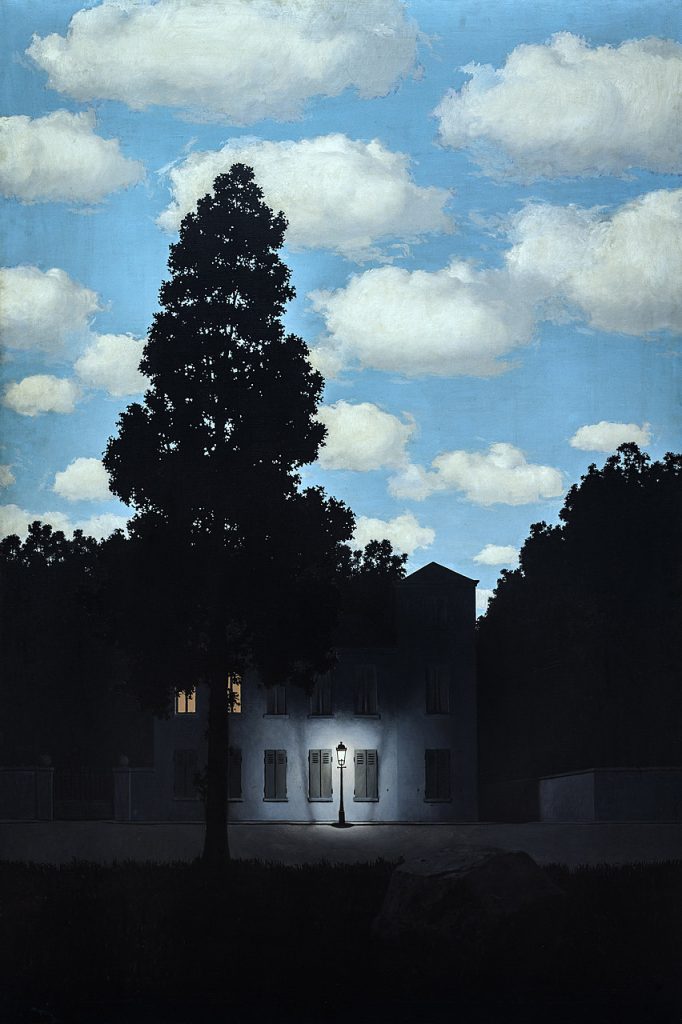
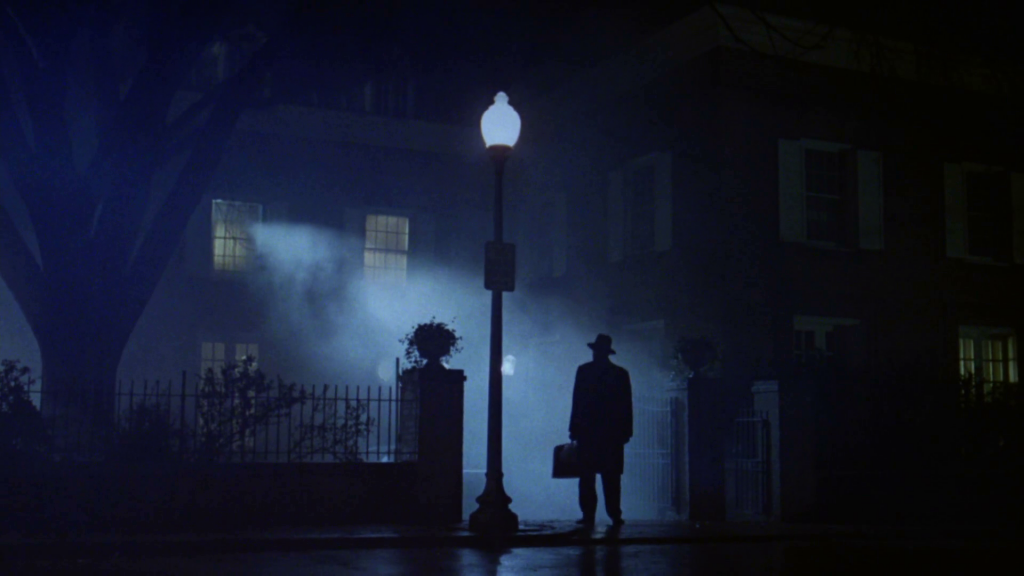
In fact, that lamppost and the setting are very similar, if not identical, to Magritte’s The Empire of Light (which exists in three versions). This painting is a real oxymoron; it opposes light and darkness, day and night, making them coexist. In the dark part of the painting the only light sources are the streetlight and the window.
These seem to be the only signs of hope, as well as for Merrin, the exorcist who is the only hope for the 12-year-old Regan, possessed by the evil demon Pazuzu. The coexistence of darkness and light could also symbolize the end of the movie (don’t worry, no spoiler) and the opposition of good and evil.
Often directors choose to give new meanings to paintings. For example, in a scene from Moonlight, the first LGBTQ-related and the first film with an all-black cast to win the Oscar for Best Picture, we see Chiron (the main character) from behind as he observes the sea and the moon.
Chiron has a very complicated life, but when he stares at the sea all his problems seem to disappear. This scene reminds one of The Evening Gown in which an unknown woman, who looks like a mysterious goddess, watches the ocean.
.jpg!Large.jpg)

Even if the subjects are different, the painting and this part of the movie give us the same feeling, an odd sense of peace mixed with melancholy.
We know that Chiron’s life is not going to get better as he grows up, but at that moment time seems to stop and in the moonlight everything is fine.
The Truman Show by Peter Weir is a must-see movie. It tells a story about the illusion of living in a world in which you are the main character and there is always someone protecting (and controlling) you. In the end, there is a choice that must be made between fiction and reality, safety or freedom.
Truman comes to understand his real situation little by little, as if he is climbing the steps of a stairway toward the truth. This is also the way Weir decided to represent the end of the movie.

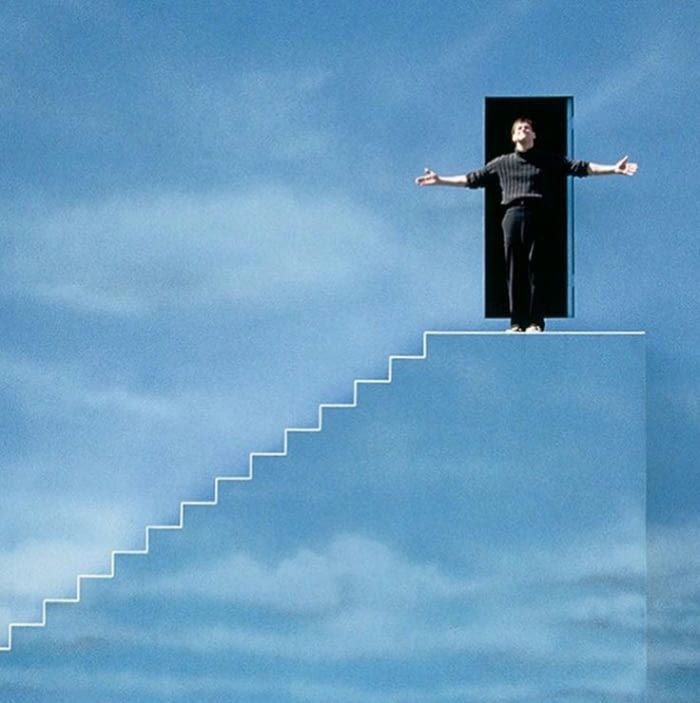
The stairway that leads to the other world reminds one of Architecture in the Moonlight. We cannot see what is beyond the stairs however, except for an open door that shows a grey sphere. The atmosphere is also reminiscent of Giorgio de Chirico‘s artworks, filled with silence and without any human presence.
In the movie scene there is a human being, though. Truman also doesn’t know what is beyond that door. Watch the movie to find out if he decides to step out into a new world.
In his paintings, Magritte often represented the depersonalization of the individual. His men in bowler hats are all the same, faceless, as seen in Golconda with a cold gaze, or shown from behind as in The Mysteries of the Horizon.
Trainspotting by Danny Boyle tells the story of a group of friends who don’t fit into modern society and therefore try to escape from that reality through drugs. Mark, the main character, wants to understand who he is and in which world he wants to live.
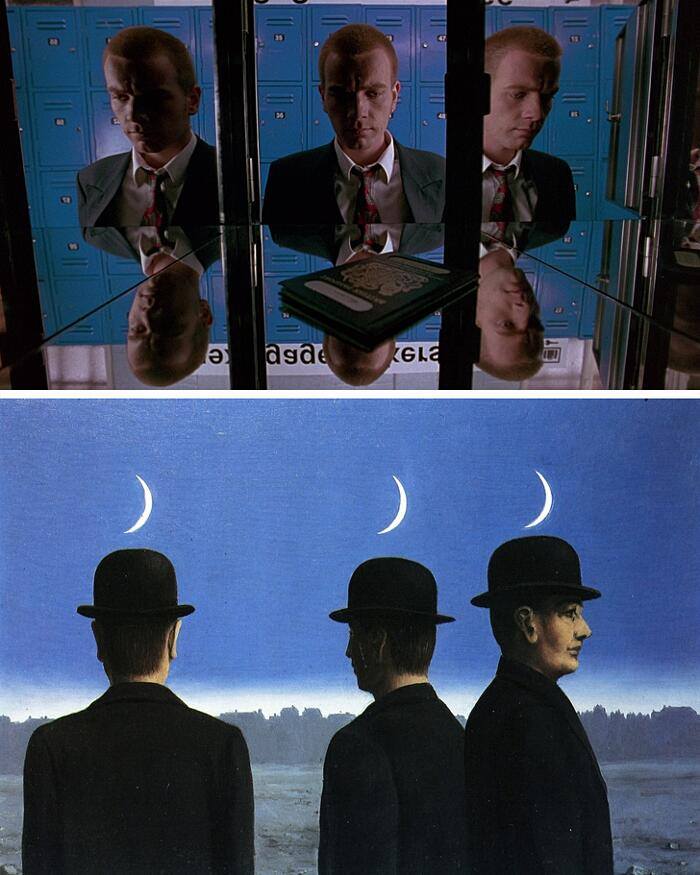
The scene which alludes to Magritte’s painting shows Mark, split in three by opposing mirrors, in front of a passport which could lead him towards a new path in life. At that moment he is trying to figure out what his possibilities are, considering different horizons similar to the men in Magritte’s work.
You can also find references to Magritte’s works in the movies Maléna by Giuseppe Tornatore, in The Thomas Crown Affair by Norman Jewison, and in Twin Peaks by David Lynch. Let us know if you find them!
Edward Hopper was a painter, exponent of American Realism, who was able to represent the life of American people in the 19th century in a very peculiar way. For example, the cold light and tones, the geometries, and the characters’ loneliness reveal a soundless and empty world.
His works convey a sense of anguish, maybe because the people and the buildings depicted look almost fake, like mannequins. For this reason, we can find references to Hopper’s paintings in some of the best horror and thriller movies.
Hopper’s House by the Railroad depicts a Victorian building, set in a desolate landscape next to a railroad, a symbol of modernity. Also there is absolutely nothing nearby, no vegetation, people, nor any other signs of life.
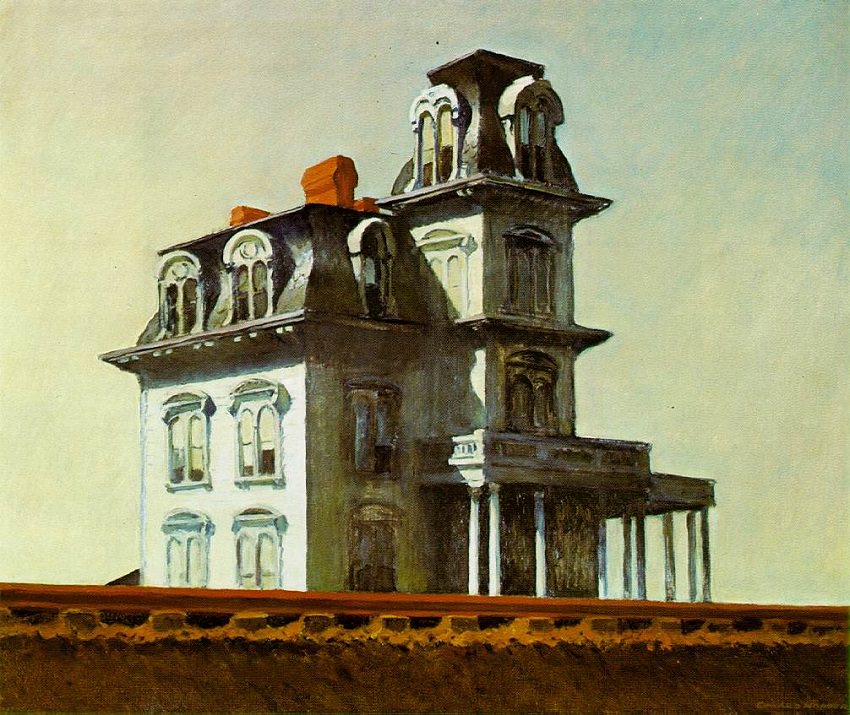

35 years later Hitchcock took inspiration from this painting and built it as Norman Bates’ home (the main character of Psycho). As Bates says, he doesn’t have many guests at his motel since they redirected the highway. In his isolation, Bates’ madness grew and he thus became the murderer we all know.
In 1930 the collector Stephen C. Clark gave this painting to the MoMA in New York, where it still is today. However, if you want to visit the house set of the movie, it is still at Universal Studios in Hollywood.
The Nighthawks is Hopper’s best-known work. He just wanted to represent a nightlife scene of Chicago, but he was able to capture the lack of communication and the loneliness of the characters. In fact, the customers of Phillies seem to be lost in their thoughts, as if they don’t even know that there are other people around them.
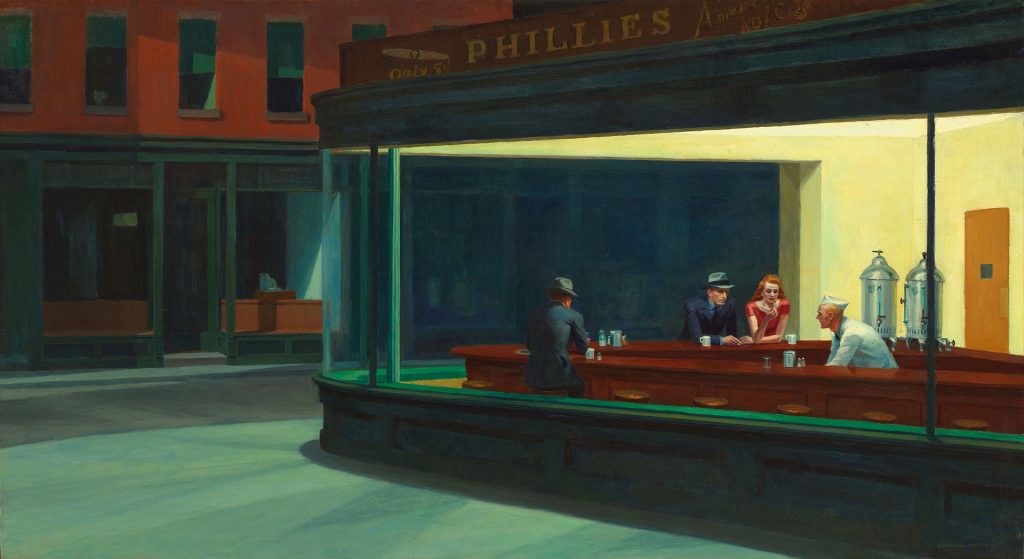
This painting has been analyzed, modified, and thought over countless times. Also some directors recreated it as a set for their movies. For example, in Dario Argento’s most famous film, Deep Red, the Chicago bar, Phillies, becomes the Blue Bar in an Italian imaginary city between Rome and Turin.
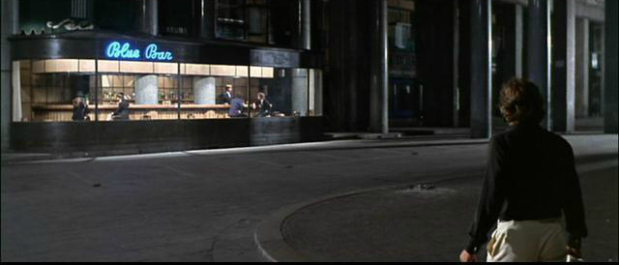

Dario Argento put the Blue Bar in Turin, in CLN Square and made it a key place for the movie. Here, Marc hears the screams of the first victim and here everything will finally make sense in the end.
Alfred Hitchcock was truly Hopper’s number one fan. In Rear Window, which screened at the 1954 Venice Film Festival, there are many references to the painter who often depicted people seen through windows.
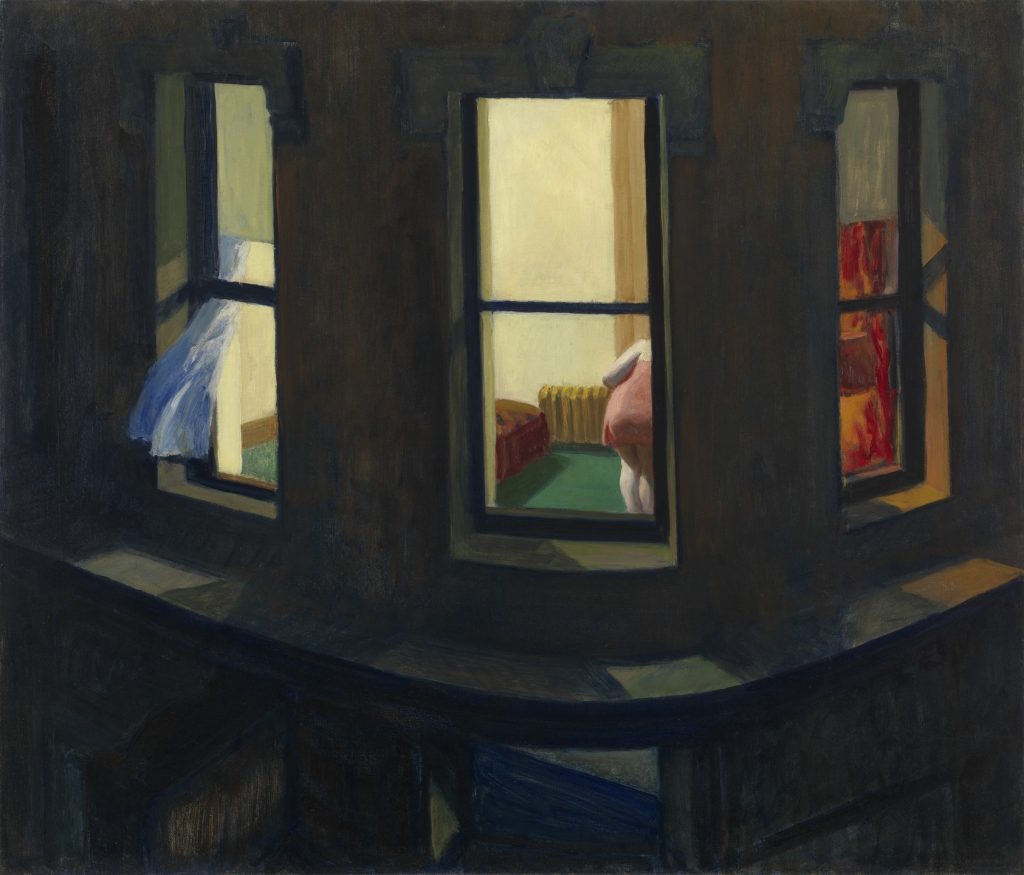
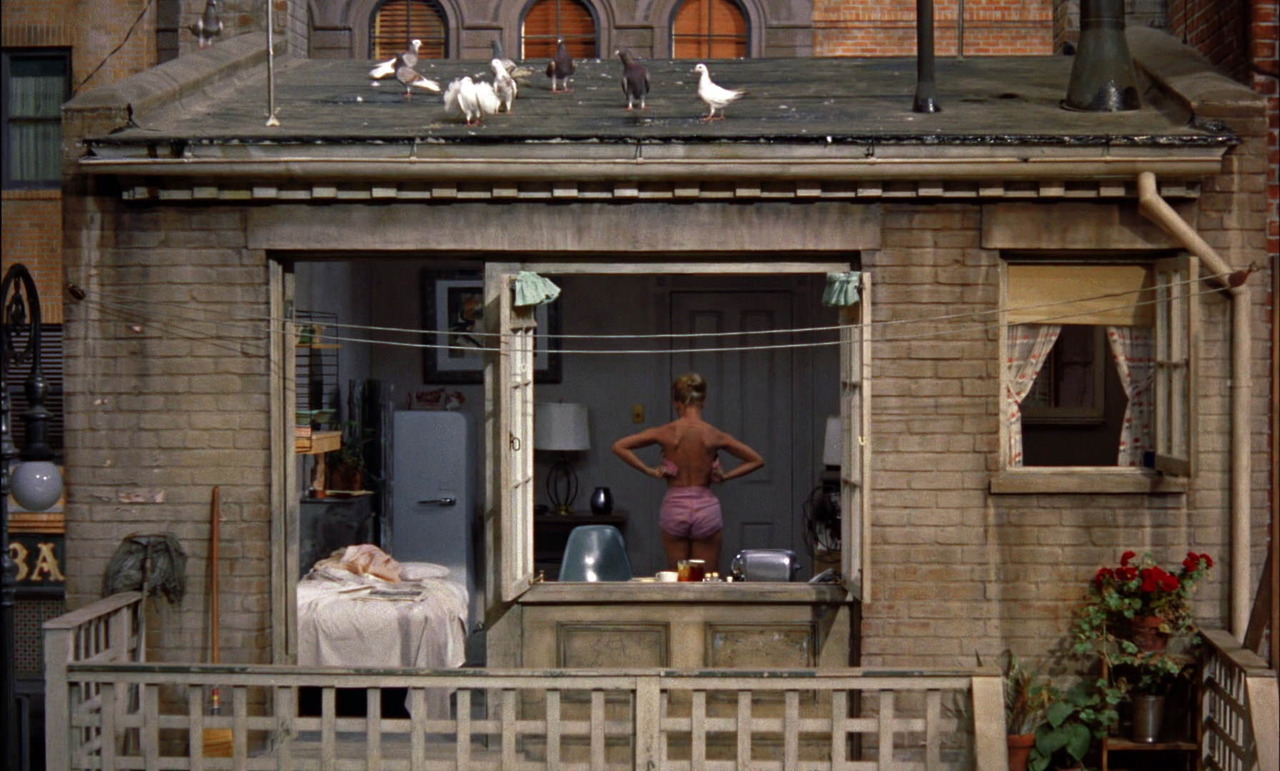
Likewise to Hopper, Jeff, a photographer confined to a wheelchair, watches his neighbors in their apartments: a dancer, a lonely woman whom they call Miss Lonelyhearts, a pianist, a sculptor, and some couples, including the one married couple he should have left alone.
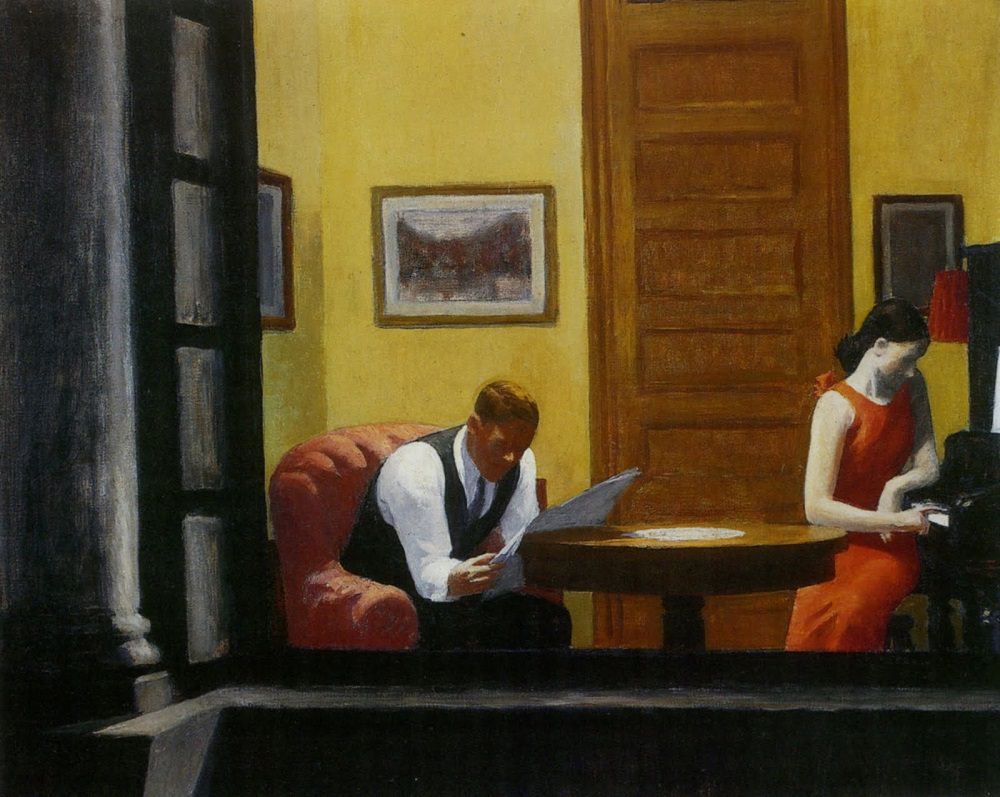

This movie and Hopper’s paintings also share themes of isolation and incommunicability. Both the painter and Jeff are alone observing lonely, silent people and can’t communicate with them.
If you love Hopper too, you should watch the movie Shirley: Vision of Reality by Gustav Deutsch. It tells the life of an American actress between 1931 and 1963, but most importantly it is composed of 13 scenes that each represent on of Hopper’s paintings.
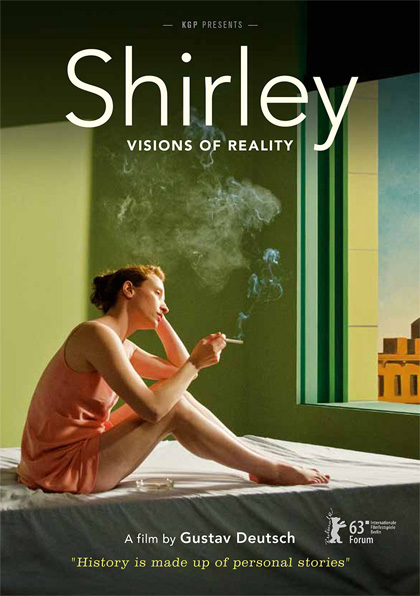
If Hopper wanted to represent the normal reality around him, Escher did the opposite however. Through his woodcuts, lithographs, and mezzotints he tried to break down, analyze or overturn the laws of science. His impossible, symmetric geometries and objects explored mathematical and scientific concepts, defying space, time and gravity.
If we talk about time, space, and gravity in cinema we immediately think of Christopher Nolan. You have to watch his movies at least two or three times to fully understand them as this director plays with the spectator’s mind, twisting every established concept underlying our reality.
If you think about it, Nolan could be the Escher of cinema. So, it is not a shock to learn that he used some of the artist’s works to build the architecture of his movies.
For example, in Inception Arthur (the Point Man, played by Joseph Gordon-Levitt) shows Ariadne (the Architect, played by Elliot Page) how to create unbreakable mental mazes by constructing infinite structures (not the easiest thing to do for a recent graduate).
However, during their conversation, she realizes that they have been traversing the same single flight of stairs. With a high-angle shot, we then see that the staircase looks like that of Escher’s Ascending and Descending. The artist was able to create a visual paradox using conflicting proportions.
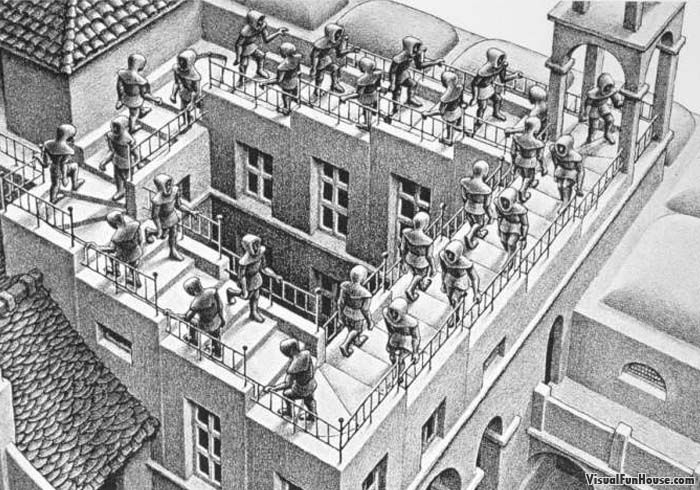
If you are a Potterhead, this staircase may remind you of a well-known quote from the first movie. Percy Weasley warns the young wizards and witches saying: “And keep an eye on the staircases. They like to change”. Have you noticed the resemblance to Escher’s artwork?
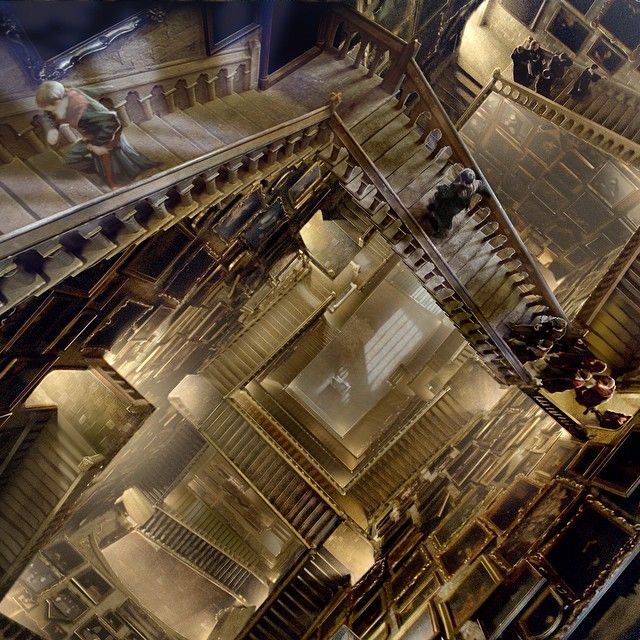
The film Labyrinth is a 1986 musical fantasy starring David Bowie. The singer plays the Goblin King Jareth, who takes a young boy from his sister, Sarah. Sarah then has 13 hours to rescue him by solving a labyrinth in which we can find a room based on the painting Relativity.
This is one of Escher’s most popular works and represents a world where there are three different sources of gravity. The inhabitants of this world mind their own business and go up or down the several stairs represented.
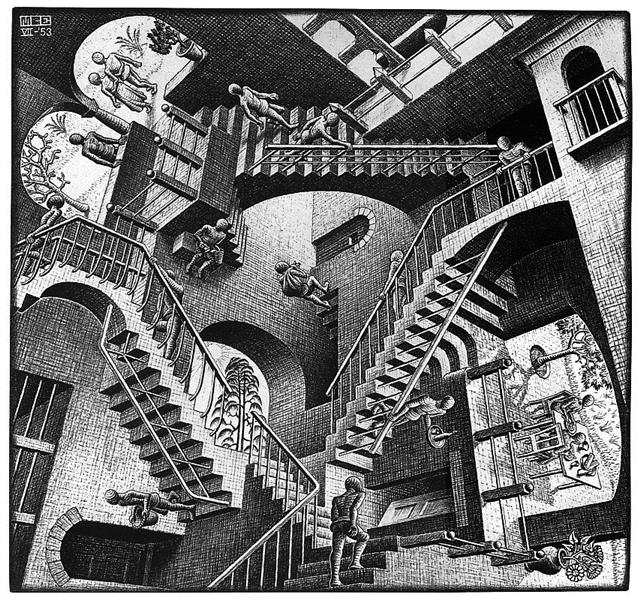
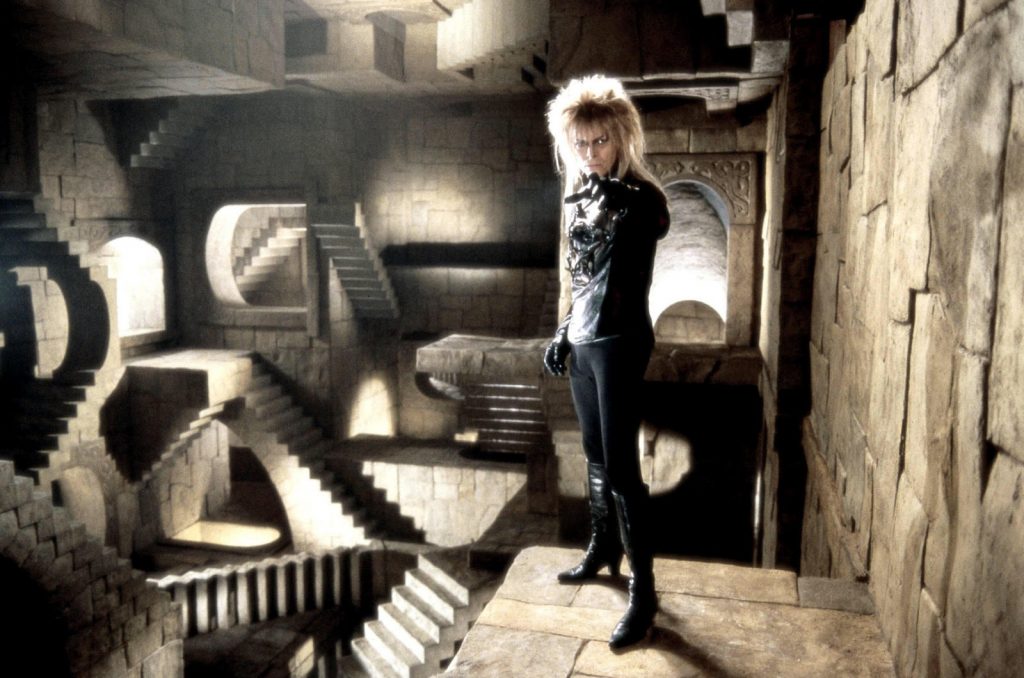
As we have already noted, Dario Argento takes great care in the setting of his movies, and surely he is an art connoisseur. His movie Suspiria tells the story of Susy Bannon, an American girl who finds out the horrible reality hidden behind the German ballet academy she got into.
Here we can find many references to Escher’s art, starting with the name of the road where the main location of the film is, the Escherstraße. Also Escher’s Relativity is painted on the wall of Madame le Blance’s studio, while we see Sky and Water I in Pat’s room.
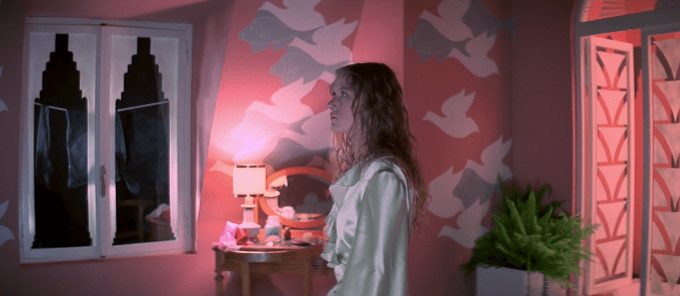
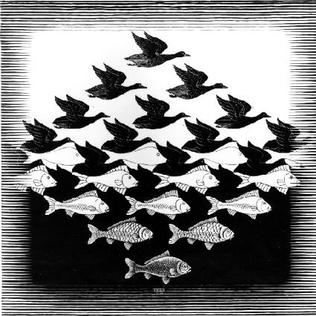
Both of these works transport us to another world, between the real and the supernatural, as well as Suspiria does.
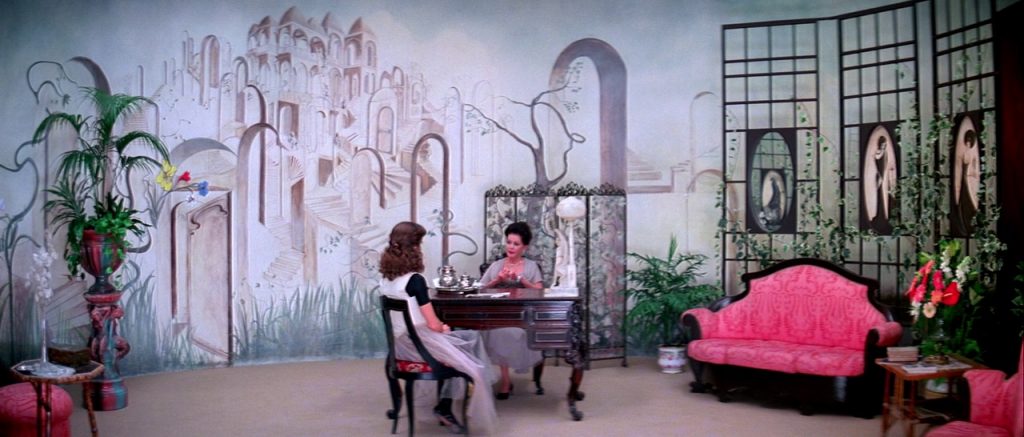
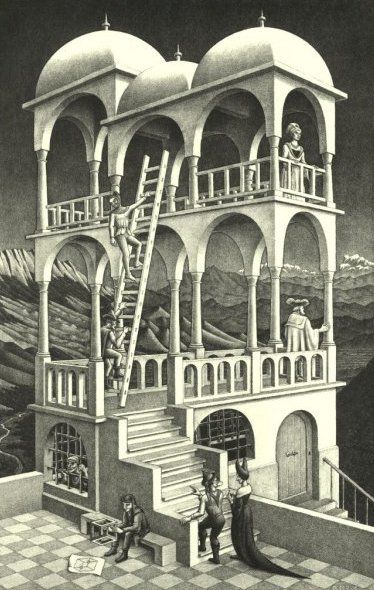
Let’s end with something that not everyone knows. If you watch carefully, in the 1991 Disney movie Beauty and the Beast you’ll notice that in the scene of Gaston’s death, there is a close-up of his eyes. It lasts just one second, but if you stop the video you can see that there are skulls in his pupils.
This reminds us of Escher’s artwork Eye, a mezzotint made in 1946. Was this intentional? We don’t know, but the resemblance speaks for itself.

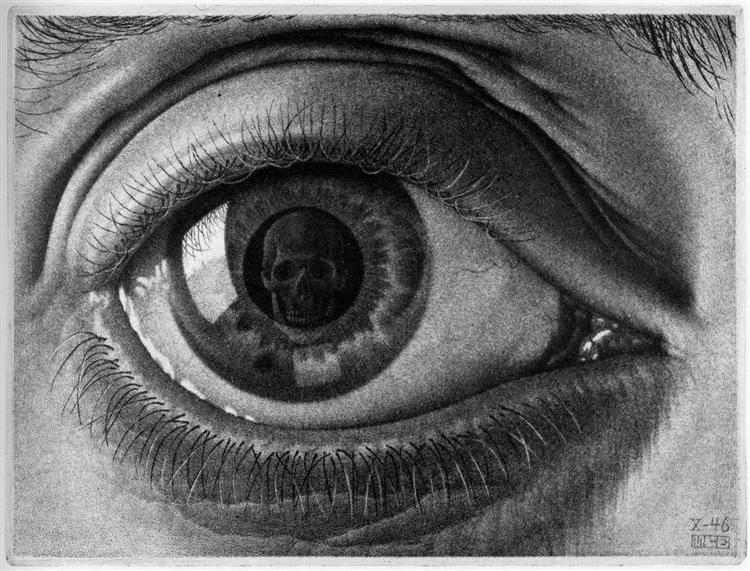
DailyArt Magazine needs your support. Every contribution, however big or small, is very valuable for our future. Thanks to it, we will be able to sustain and grow the Magazine. Thank you for your help!